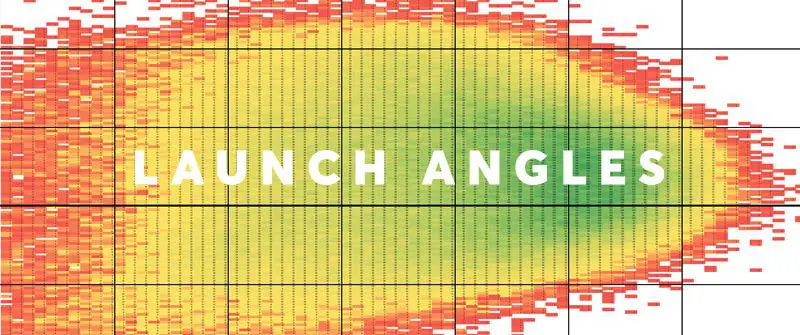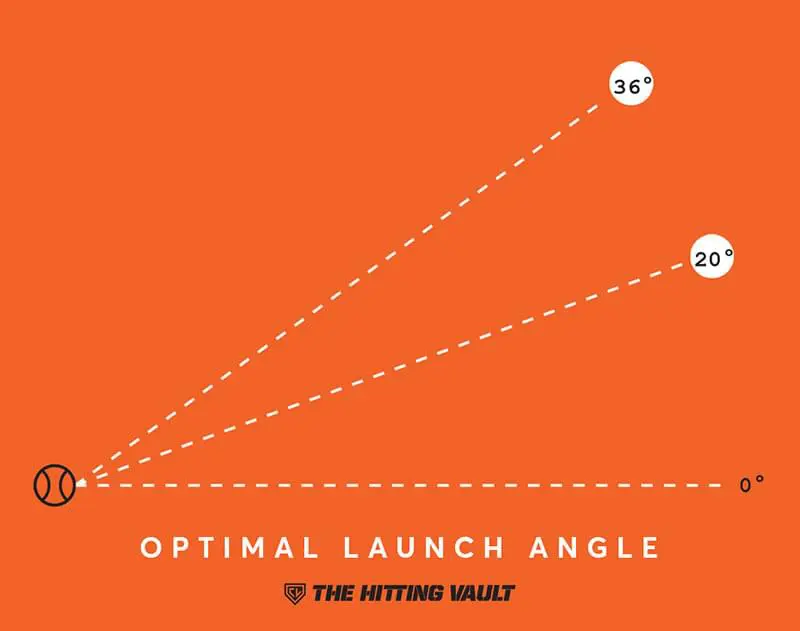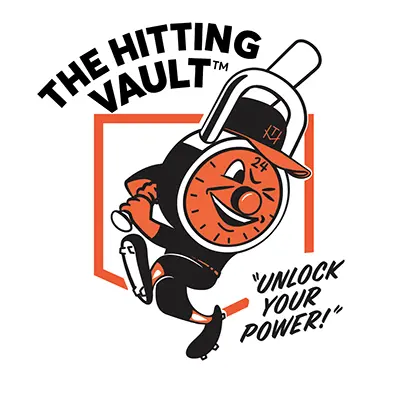Launch Angle in Baseball and Softball

Table of Contents
If you’ve been following baseball closely over the last few years you’ve probably heard the term Launch Angle. Launch Angles are a very hot topic in baseball and among hitting coaches and hitters across the country.
What is Launch Angle?
According to the MLB Glossary:
Launch Angle represents the vertical angle at which the ball leaves a player’s bat after being struck. Average Launch Angle (aLA) is calculated by dividing the sum of all Launch Angles by all Batted Ball Events.
As a guideline, here are the Launch Angles for different types of contact:
Ground ball: Less than 10 degrees
Line drive: 10-25 degrees
Fly ball: 25-50 degrees
Pop up: Greater than 50 degrees
Average Launch Angle tells us about the tendencies of hitters. With a high average Launch Angle indicating a fly-ball hitter, and a low average Launch Angle indicating a ground-ball hitter.

What We’ve Learned about Launch Angle and Baseball
Over the last few years hitting coaches, players and front office personnel have learned a lot about Launch Angles and what they mean. In Major League Baseball, they have enough data to know that if a ball is hit at X amount of Exit Velocity (the speed in which the ball comes off the bat) with the X amount of Launch Angle, they know how far the ball with travel and the likelihood of whether or not it will result in a hit, out or home run.
And because of that, a new statistic has emerged called “Barrels”
Created by Tom Tango, the Barrel classification is assigned to batted-ball events whose comparable hit types (in terms of exit velocity and launch angle) have led to a minimum .500 batting average and 1.500 slugging percentage since Statcast was implemented Major League wide in 2015.
During the 2016 regular season, balls assigned the Barreled classification had a batting average of .822 and a 2.386 slugging percentage.
To be Barreled, a batted ball requires an exit velocity of at least 98 mph. At that speed, balls struck with a launch angle between 26-30 degrees always garner Barreled classification. For every mph over 98, the range of launch angles expands.
For example: A ball traveling 99 mph always earns ‘Barreled’ status when struck between 25-31 degrees. Add one more mph — to reach 100 — and the range grows another three degrees, to 24-33.
Every additional mph over 100 increases the range another two to three degrees until an exit velocity of 116 mph is reached. At that threshold, the Barreled designation is assigned to any ball with a launch angle between eight and 50 degrees.
As much as we’ve learned about exit velocity and launch angle in baseball, what does it mean for softball where the ball is bigger, heavier, and the fences are much shorter?
I’ve been on a personal journey the last two years to collect data and learn as much as I can about launch angle in relation to softball. Now I want to share some of the things I’ve learned.
For the hitters that I work with that hit the highest percentage of Home Runs, most of them have a max exit velocity of 76-82 mph and an average exit velocity of 64+. Having said that, you don’t necessarily have to hit the ball that hard to hit a home run. If there is no wind and average conditions (humidity, etc.) you can hit a ball 63mph at 31 degrees and it will just barely scrape over a four foot high 200-foot fence. Hit the same ball at 63mph with 3-degree launch angle the ball travels 85 feet in the air and may not get out of the infield.
Now, for the most part, the MLB Glossary definition of what is a ground ball, line drive, and fly out still apply in softball. In order to hit the ball over an infielders head it usually takes a 10-14 degree angle. Depending on the location of the pitch and the height of the infielder (haha). I’ve also learned that the same “Barrels” principle applies in softball for batted balls but the exit velocity correlation is much different. You don’t have to hit the ball 98 mph to get it out of the ball park in softball (The hardest softball I’ve ever seen recorded is 85mph) as you read earlier you can hit one out at many fields with the right angle at around 63mph.
Softball Barrels
In Softball, for a batted ball to fall into the “Barrels” category (where it leads to .500 average and 1.500 SLG%) the #’s are more like 67mph+ and between 20-38 degrees launch angle. The Launch Angle spectrum is much wider in softball due to the 200/220 foot fences at most parks. The further the fence the harder the ball has to be hit and the launch angle spectrum window gets smaller.
The most ideal Launch Angle for Home Runs in softball is about 26 degrees. A softball struck at 70mph and 26 degrees is hit 235 feet in the air…a no doubter at almost any park.
“But Coach Lisle…I’m not a Home Run Hitter”
I get this response often. Here’s the thing. A good swing (the swing that The Hitting Vault teaches) will produce a Launch Angle average for most hitters around 17-20 degrees. (In that line drive range). When I say average that means there will also be lots of 25-35 and lots of 5-15’s as well.
Now, if we have a hitter that “tries” to hit home runs by focusing on raising their average launch angle to 25+ and their misses end up in the 35-45 range, they better hit the ball hard every time or they’re going to lead the country in warning track fly outs.
A good line drive swing with a little swing power attached to it (63mph+) = more home runs. As long as hitters understand that their focus should be on line drives and not the home runs, they’re on the right path.
Are Ground Balls Bad?
Not necessarily. The harder you hit a ball (exit velocity) the better chance you have of getting on base. This is true regardless of what Launch Angle you hit it at. But as you move past 12U softball and the infielders don’t make as many errors, their arms get stronger and they can cover more ground. Ground balls with launch angles below 8 (except for slappers) are usually gobbled up and the batter is out unless you shoot one through a hole.
Alright Coach Lisle, this is great, but what should I do with this information? What now?
Not everyone has access to machines like HitTrax, Trackman or Rapsodo to measure launch angles but I created a video for members ofThe Hitting Vault that explains and shows what Launch Angles look like in the cages and on the field that should be helpful to give you an idea. I think many people are shocked to see that the top/back of the batting cage is about 15-20 degrees. The launch angle for hitting a line drive off the middle of the cage or pitching screen is usually around 5-10 degrees.
If you don’t have a radar gun or something to track launch angle, here’s what I suggest:
– you have a hitter that grounds out more than they fly out and you can tell their average launch angle is always low, spend some time on swing path drills. In the Hitting Vault, we have several hitting drills for launch angle, but these are my favorite:
- Angle Toss
- Bat Path Drill
- Get On Plane Drill
– If you have a hitter that you feel already has a great swing and you see nice line drive launch angle consistently, but not seeing them hitting the ball as hard as they can, focus on turns and lower body movements. My favorite Hitting Vault Drills for this are:
- Separation Drill
- Full Turns
- Med Ball Toss
- Lower Body Coil
- The Hitting Vault Bat Speed program
What about Attack Angle?
If you have a Zepp, Blast Motion or Diamond Kinetics bat sensor one of the metrics you can work on and focus on for swing path is Attack Angle:
A typical attack angle of the barrel on a groundball is -15 to 0. On the flip side, the attack angle on a line drive is +5 to +20. A typical attack angle of the barrel on a flyball is +20 to +35. We try to have an attack angle of about 10 degrees.
Most professional hitters have a consistent attack angle between +8 to +12 degrees. Most amateur hitters struggle to get through the ball and have a negative attack angle.
In baseball and softball, you’re going to hear more and more about Launch Angles spoken by commentators, coaches and hitters. There are three things to consider when looking to develop an elite swing:
- Max exit velocity
- Average exit velocity
- Average launch angle when hitting (especially in the cage).
And lastly, remember..you have to Elevate to Celebrate.
Hard work, works
Coach Lisle

The Hitting Vault is the most popular, most trusted and highest rated online hitting community.
It was created to teach athletes how to move their body to unlock their most powerful swing. It’s designed to help coaches get optimal results from their athletes. Join and get access to over 100+ exclusive videos for members and step-by-step instruction so you’ll know exactly what to do next to unlock your power at the plate.



